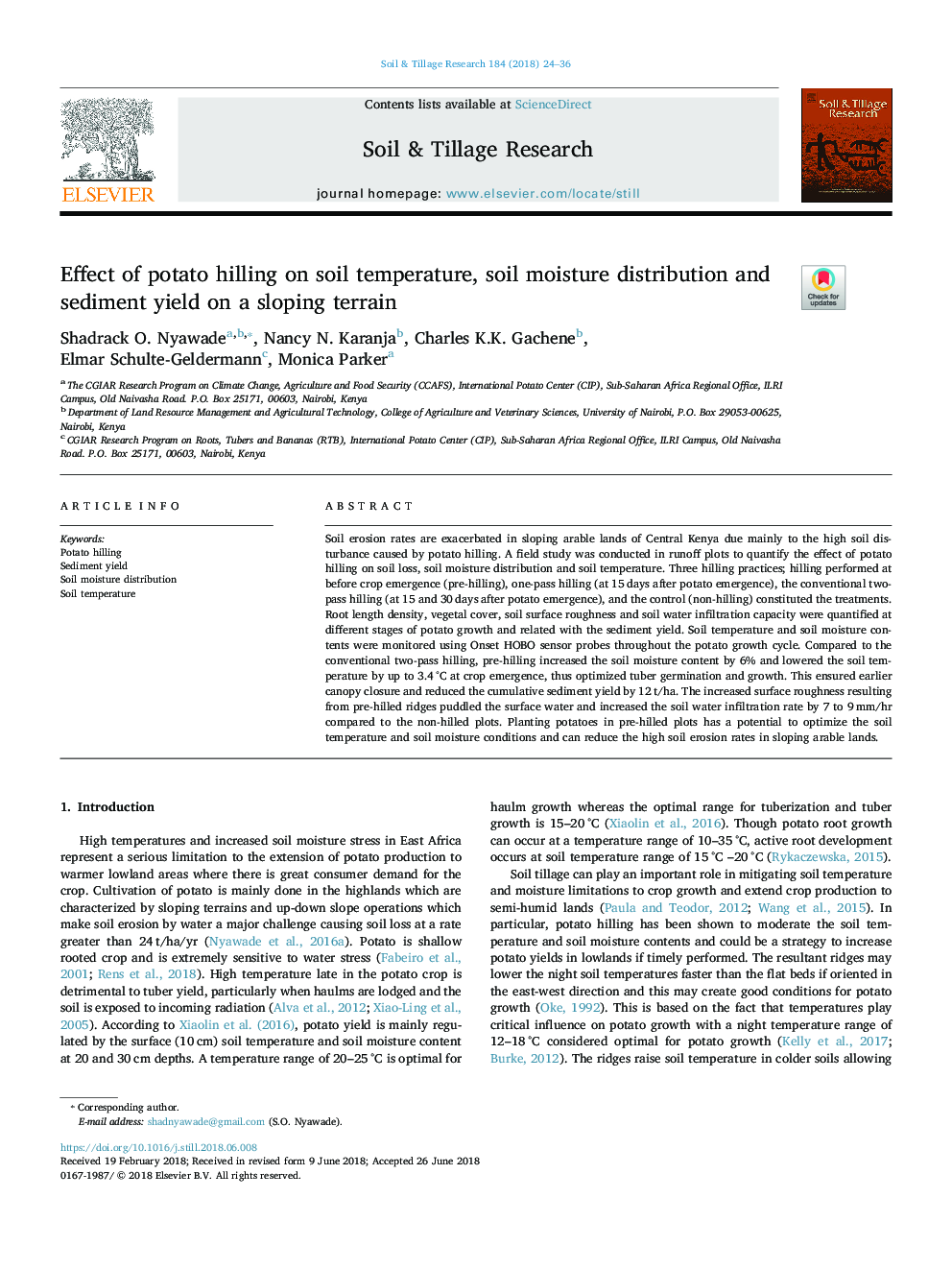| Article ID | Journal | Published Year | Pages | File Type |
|---|---|---|---|---|
| 6772874 | Soil and Tillage Research | 2018 | 13 Pages |
Abstract
Soil erosion rates are exacerbated in sloping arable lands of Central Kenya due mainly to the high soil disturbance caused by potato hilling. A field study was conducted in runoff plots to quantify the effect of potato hilling on soil loss, soil moisture distribution and soil temperature. Three hilling practices; hilling performed at before crop emergence (pre-hilling), one-pass hilling (at 15â¯days after potato emergence), the conventional two-pass hilling (at 15 and 30â¯days after potato emergence), and the control (non-hilling) constituted the treatments. Root length density, vegetal cover, soil surface roughness and soil water infiltration capacity were quantified at different stages of potato growth and related with the sediment yield. Soil temperature and soil moisture contents were monitored using Onset HOBO sensor probes throughout the potato growth cycle. Compared to the conventional two-pass hilling, pre-hilling increased the soil moisture content by 6% and lowered the soil temperature by up to 3.4â¯Â°C at crop emergence, thus optimized tuber germination and growth. This ensured earlier canopy closure and reduced the cumulative sediment yield by 12â¯t/ha. The increased surface roughness resulting from pre-hilled ridges puddled the surface water and increased the soil water infiltration rate by 7 to 9â¯mm/hr compared to the non-hilled plots. Planting potatoes in pre-hilled plots has a potential to optimize the soil temperature and soil moisture conditions and can reduce the high soil erosion rates in sloping arable lands.
Keywords
Related Topics
Physical Sciences and Engineering
Energy
Renewable Energy, Sustainability and the Environment
Authors
Shadrack O. Nyawade, Nancy N. Karanja, Charles K.K. Gachene, Elmar Schulte-Geldermann, Monica Parker,
